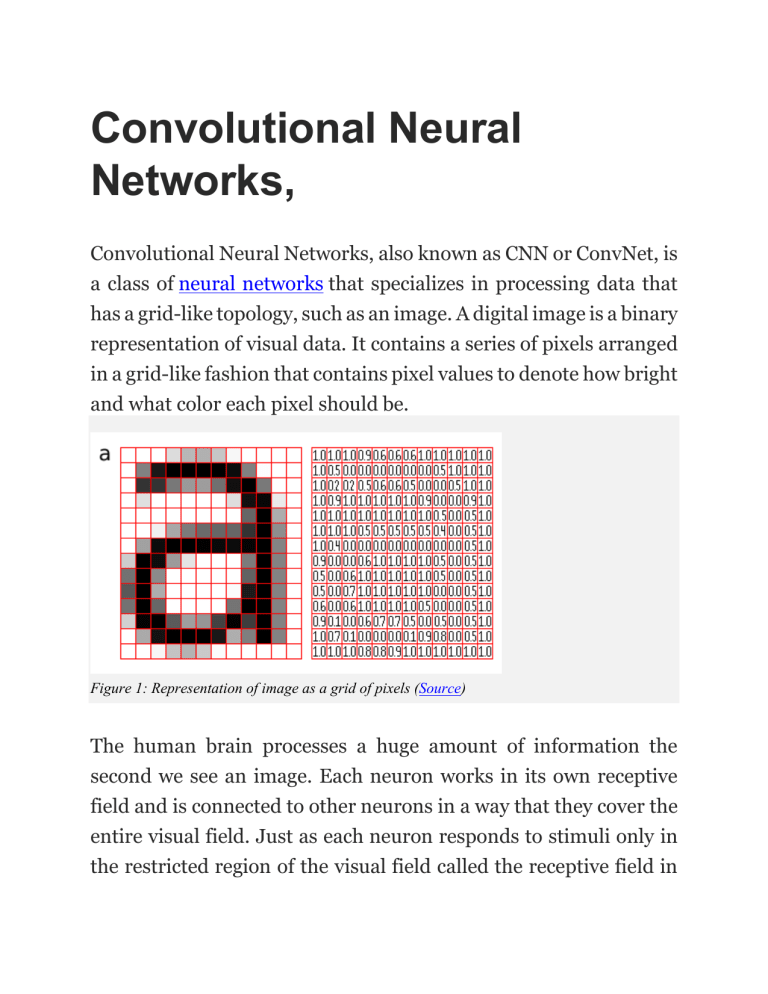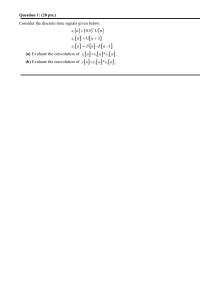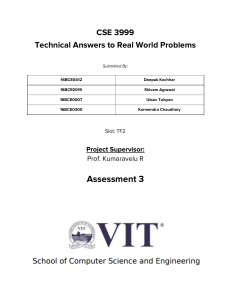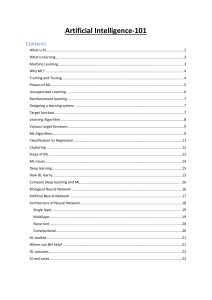
Convolutional Neural Networks, Convolutional Neural Networks, also known as CNN or ConvNet, is a class of neural networks that specializes in processing data that has a grid-like topology, such as an image. A digital image is a binary representation of visual data. It contains a series of pixels arranged in a grid-like fashion that contains pixel values to denote how bright and what color each pixel should be. Figure 1: Representation of image as a grid of pixels (Source) The human brain processes a huge amount of information the second we see an image. Each neuron works in its own receptive field and is connected to other neurons in a way that they cover the entire visual field. Just as each neuron responds to stimuli only in the restricted region of the visual field called the receptive field in the biological vision system, each neuron in a CNN processes data only in its receptive field as well. The layers are arranged in such a way so that they detect simpler patterns first (lines, curves, etc.) and more complex patterns (faces, objects, etc.) further along. By using a CNN, one can enable sight to computers. Convolutional Neural Network Architecture A CNN typically has three layers: a convolutional layer, a pooling layer, and a fully connected layer. Figure 2: Architecture of a CNN (Source) Convolution Layer The convolution layer is the core building block of the CNN. It carries the main portion of the network’s computational load. This layer performs a dot product between two matrices, where one matrix is the set of learnable parameters otherwise known as a kernel, and the other matrix is the restricted portion of the receptive field. The kernel is spatially smaller than an image but is more in-depth. This means that, if the image is composed of three (RGB) channels, the kernel height and width will be spatially small, but the depth extends up to all three channels. Illustration of Convolution Operation (source) During the forward pass, the kernel slides across the height and width of the image-producing the image representation of that receptive region. This produces a two-dimensional representation of the image known as an activation map that gives the response of the kernel at each spatial position of the image. The sliding size of the kernel is called a stride. If we have an input of size W x W x D and Dout number of kernels with a spatial size of F with stride S and amount of padding P, then the size of output volume can be determined by the following formula: Formula for Convolution Layer This will yield an output volume of size Wout x Wout x Dout. Figure 3: Convolution Operation (Source: Deep Learning by Ian Goodfellow, Yoshua Bengio, and Aaron Courville) Motivation behind Convolution Convolution leverages three important ideas that motivated computer vision researchers: sparse interaction, parameter sharing, and equivariant representation. Let’s describe each one of them in detail. Trivial neural network layers use matrix multiplication by a matrix of parameters describing the interaction between the input and output unit. This means that every output unit interacts with every input unit. However, convolution neural networks have sparse interaction. This is achieved by making kernel smaller than the input e.g., an image can have millions or thousands of pixels, but while processing it using kernel we can detect meaningful information that is of tens or hundreds of pixels. This means that we need to store fewer parameters that not only reduces the memory requirement of the model but also improves the statistical efficiency of the model. If computing one feature at a spatial point (x1, y1) is useful then it should also be useful at some other spatial point say (x2, y2). It means that for a single two-dimensional slice i.e., for creating one activation map, neurons are constrained to use the same set of weights. In a traditional neural network, each element of the weight matrix is used once and then never revisited, while convolution network has shared parameters i.e., for getting output, weights applied to one input are the same as the weight applied elsewhere. Due to parameter sharing, the layers of convolution neural network will have a property of equivariance to translation. It says that if we changed the input in a way, the output will also get changed in the same way. Pooling Layer The pooling layer replaces the output of the network at certain locations by deriving a summary statistic of the nearby outputs. This helps in reducing the spatial size of the representation, which decreases the required amount of computation and weights. The pooling operation is processed on every slice of the representation individually. There are several pooling functions such as the average of the rectangular neighborhood, L2 norm of the rectangular neighborhood, and a weighted average based on the distance from the central pixel. However, the most popular process is max pooling, which reports the maximum neighborhood. Figure 4: Pooling Operation (Source: O’Reilly Media) output from the If we have an activation map of size W x W x D, a pooling kernel of spatial size F, and stride S, then the size of output volume can be determined by the following formula: Formula for Padding Layer This will yield an output volume of size Wout x Wout x D. In all cases, pooling provides some translation invariance which means that an object would be recognizable regardless of where it appears on the frame. Fully Connected Layer Neurons in this layer have full connectivity with all neurons in the preceding and succeeding layer as seen in regular FCNN. This is why it can be computed as usual by a matrix multiplication followed by a bias effect. The FC layer helps to map the representation between the input and the output. Non-Linearity Layers Since convolution is a linear operation and images are far from linear, non-linearity layers are often placed directly after the convolutional layer to introduce non-linearity to the activation map. There are several types of non-linear operations, the popular ones being: 1. Sigmoid The sigmoid non-linearity has the mathematical form σ(κ) = 1/(1+e¯κ). It takes a real-valued number and “squashes” it into a range between 0 and 1. However, a very undesirable property of sigmoid is that when the activation is at either tail, the gradient becomes almost zero. If the local gradient becomes very small, then in backpropagation it will effectively “kill” the gradient. Also, if the data coming into the neuron is always positive, then the output of sigmoid will be either all positives or all negatives, resulting in a zig-zag dynamic of gradient updates for weight. 2. Tanh Tanh squashes a real-valued number to the range [-1, 1]. Like sigmoid, the activation saturates, but — unlike the sigmoid neurons — its output is zero centered. 3. ReLU The Rectified Linear Unit (ReLU) has become very popular in the last few years. It computes the function ƒ(κ)=max (0,κ). In other words, the activation is simply threshold at zero. In comparison to sigmoid and tanh, ReLU is more reliable and accelerates the convergence by six times. Unfortunately, a con is that ReLU can be fragile during training. A large gradient flowing through it can update it in such a way that the neuron will never get further updated. However, we can work with this by setting a proper learning rate. Designing a Convolutional Neural Network Now that we understand the various components, we can build a convolutional neural network. We will be using Fashion-MNIST, which is a dataset of Zalando’s article images consisting of a training set of 60,000 examples and a test set of 10,000 examples. Each example is a 28x28 grayscale image, associated with a label from 10 classes. The dataset can be downloaded here. Our convolutional neural network has architecture as follows: [INPUT] →[CONV 1] → [BATCH NORM] → [ReLU] → [POOL 1] → [CONV 2] → [BATCH NORM] → [ReLU] → [POOL 2] → [FC LAYER] → [RESULT] For both conv layers, we will use kernel of spatial size 5 x 5 with stride size 1 and padding of 2. For both pooling layers, we will use max pool operation with kernel size 2, stride 2, and zero padding. Calculations for Conv 1 Layer (Image by Author) Calculations for Pool1 Layer (Image by Author) Calculations for Conv 2 Layer (Image by Author) Calculations for Pool2 Layer (Image by Author) Size of Fully Connected Layer (Image by Author) Code snipped for defining the convnet class convnet1(nn.Module): def __init__(self): super(convnet1, self).__init__() # Constraints for layer 1 self.conv1 = nn.Conv2d(in_channels=1, out_channels=16, kernel_size=5, stride = 1, padding=2) self.batch1 = nn.BatchNorm2d(16) self.relu1 = nn.ReLU() self.pool1 = nn.MaxPool2d(kernel_size=2) #default stride is equivalent to the kernel_size # Constraints for layer 2 self.conv2 = nn.Conv2d(in_channels=16, out_channels=32, kernel_size=5, stride = 1, padding=2) self.batch2 = nn.BatchNorm2d(32) self.relu2 = nn.ReLU() self.pool2 = nn.MaxPool2d(kernel_size=2) # Defining the Linear layer self.fc = nn.Linear(32*7*7, 10) # defining the network flow def forward(self, x): # Conv 1 out = self.conv1(x) out = self.batch1(out) out = self.relu1(out) # Max Pool 1 out = self.pool1(out) # Conv 2 out = self.conv2(out) out = self.batch2(out) out = self.relu2(out) # Max Pool 2 out = self.pool2(out) out = out.view(out.size(0), -1) # Linear Layer out = self.fc(out) return out We have also used batch normalization in our network, which saves us from improper initialization of weight matrices by explicitly forcing the network to take on unit Gaussian distribution. The code for the above-defined network is available here. We have trained using cross-entropy as our loss function and the Adam Optimizer with a learning rate of 0.001. After training the model, we achieved 90% accuracy on the test dataset. Applications Below are some applications of Convolutional Neural Networks used today: 1. Object detection: With CNN, we now have sophisticated models like R-CNN, Fast R-CNN, and Faster R-CNN that are the predominant pipeline for many object detection models deployed in autonomous vehicles, facial detection, and more. 2. Semantic segmentation: In 2015, a group of researchers from Hong Kong developed a CNN-based Deep Parsing Network to incorporate rich information into an image segmentation model. Researchers from UC Berkeley also built fully convolutional networks that improved upon state-of-the-art semantic segmentation. 3. Image captioning: CNNs are used with recurrent neural networks to write captions for images and videos. This can be used for many applications such as activity recognition or describing videos and images for the visually impaired. It has been heavily deployed by YouTube to make sense to the huge number of videos uploaded to the platform on a regular basis. References 1. Deep Learning by Ian Goodfellow, Yoshua Bengio and Aaron Courville published by MIT Press, 2016 2. Stanford University’s Course — CS231n: Convolutional Neural Network for Visual Recognition by Prof. Fei-Fei Li, Justin Johnson, Serena Yeung 3. https://datascience.stackexchange.com/questions/14349/differ ence-of-activation-functions-in-neural-networks-in-general 4. https://www.codementor.io/james_aka_yale/convolutionalneural-networks-the-biologically-inspired-model-iq6s48zms 5. https://searchenterpriseai.techtarget.com/definition/convoluti onal-neural-network





